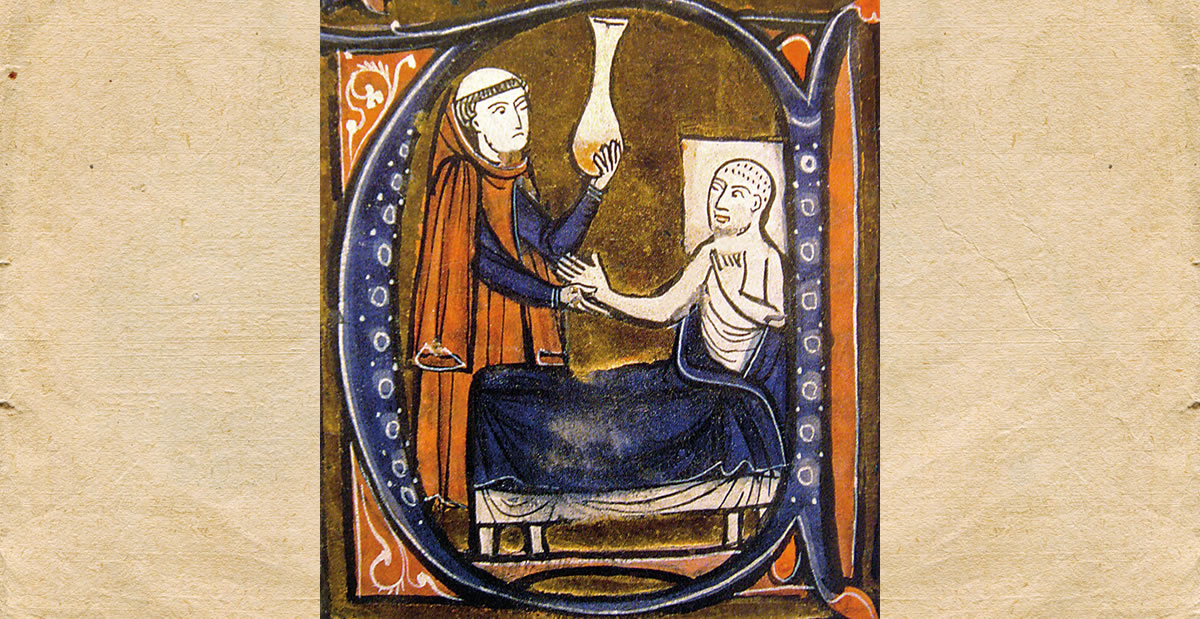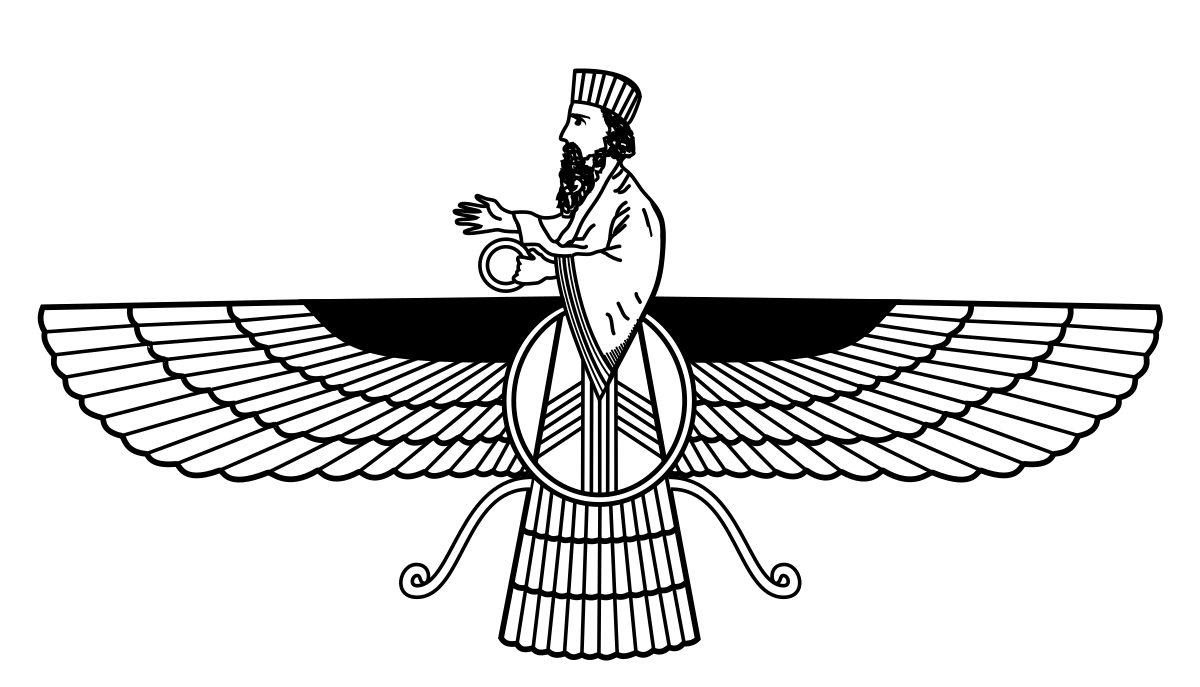- May 12, 2022
- 7,918
- 6,344
- 1,938
According to Catholic tradition blessed Gerard was a European Who presided in Islamic Jerusalem over a hospital in the late 11th century. He took on strangers Christian and non-Christian Alike to help heal them.
And when the Crusaders laid siege to Jerusalem in 1099 the tradition goes that blessed Gerard Would throw loaves of bread over the walls of Jerusalem to his Catholic brothers fighting for the liberation of the holy land. When the Muslims found out about this they captured Gerard and brought him before the Muslim lord, By miracle the loaves of bread had turned to stone to make it appear that Gerard was assisting the Muslims By attacking the Christians with stone as opposed to giving them bread. When Jerusalem was liberated the Crusaders championed and celebrated blessed Gerard.
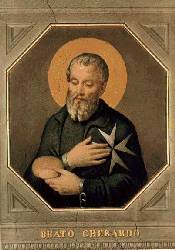
“A fresco in the Chapel of the contemporary Grand Magistry in the Via Condotti in Rome depicts Blessed Gérard (Beato Gherardo) chained with a loaf of bread in the left hand. This reminds us of the legend which tells us, Blessed Gérard would have thrown loaves of bread over the walls of Jerusalem to the hungry crusaders during the siege of six weeks preceding the conquest. He would have been caught and brought before the Ottoman defenders to be charged for supporting the enemy. When evidence was to be produced the loaves of bread in his coat had miraculously changed into stones and Blessed Gérard was acquitted.”
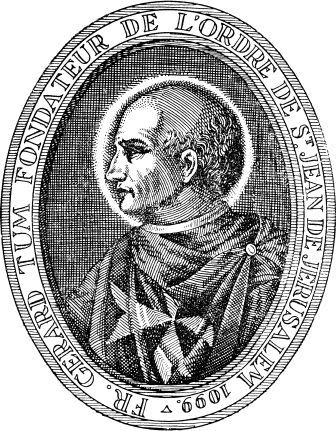

“Blessed Gérard reorganised the former guest house, which was then the hospice or hospital of Jerusalem totally in AD 1099, the year of the conquest of Jerusalem by the crusaders.”
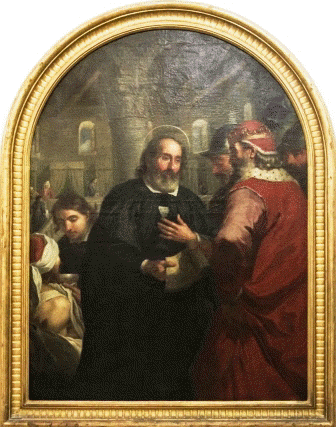
“Of course, he had to do so, because there was a vast increase of patients admitted to the hospital from among the crusaders themselves and all those who followed their trail as pilgrims again into the freed Holy City. This reorganisation is considered the foundation of the Order of St. John.”
“Rich donations, e.g. by Godfrey of Bouillon and King Baldwin I(1108) enabled Gérard amongst other things to erect branch hospitals in European Mediterranean harbours. Already before 1113 there were branch hospices at the castle of St. Egid”
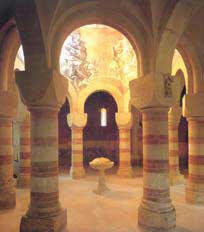
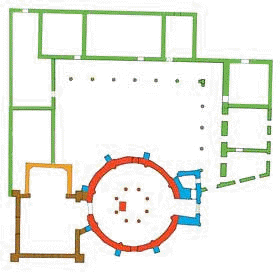
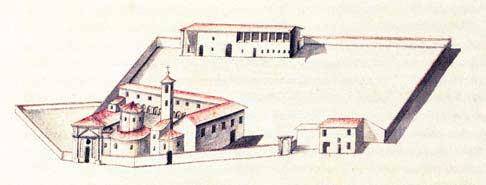
in Asti,
“Pisa, Bari, Ydrontum, Tarent and Messina. Pilgrims, who got sick, should be treated there at an early stage, because otherwise the influx of sick pilgrims into the Hospital of Jerusalem would have become too big, especially as the passage to Jerusalem was free again in these times and therefore pilgrims came to Jerusalem again in large numbers.”

[ Pope Paschalis II and King Philip I ]
“Pope Paschal II. (13.8.1099 - 21.1.1118) confirmed the hospital community on February 15, 1113 through the bull "Piae postulatio voluntatis" as a religious order, he took on the protectorate of the hospital and confirmed the acquisitions and donations of the Order in Europe and Asia”
Blessed Gérard and his everlasting brotherhood: The Order of St. John of Jerusalem (by Fr. Gérard Lagleder O.S.B.)
Blessed Gerard, his legends his real life alike would be spoken about to crowds for the rest of the middle ages as a pious man, a man who built hospitals. A man who helped those in need. A point To be taken from this is that through the 12th to 16th century Catholics would praise the name of Blessed Gerard as a man who helped the poor, a man who helped the sick, that is to say to help the sick, to help the disabled was the proper Christian way.
And when the Crusaders laid siege to Jerusalem in 1099 the tradition goes that blessed Gerard Would throw loaves of bread over the walls of Jerusalem to his Catholic brothers fighting for the liberation of the holy land. When the Muslims found out about this they captured Gerard and brought him before the Muslim lord, By miracle the loaves of bread had turned to stone to make it appear that Gerard was assisting the Muslims By attacking the Christians with stone as opposed to giving them bread. When Jerusalem was liberated the Crusaders championed and celebrated blessed Gerard.

“A fresco in the Chapel of the contemporary Grand Magistry in the Via Condotti in Rome depicts Blessed Gérard (Beato Gherardo) chained with a loaf of bread in the left hand. This reminds us of the legend which tells us, Blessed Gérard would have thrown loaves of bread over the walls of Jerusalem to the hungry crusaders during the siege of six weeks preceding the conquest. He would have been caught and brought before the Ottoman defenders to be charged for supporting the enemy. When evidence was to be produced the loaves of bread in his coat had miraculously changed into stones and Blessed Gérard was acquitted.”


“Blessed Gérard reorganised the former guest house, which was then the hospice or hospital of Jerusalem totally in AD 1099, the year of the conquest of Jerusalem by the crusaders.”

“Of course, he had to do so, because there was a vast increase of patients admitted to the hospital from among the crusaders themselves and all those who followed their trail as pilgrims again into the freed Holy City. This reorganisation is considered the foundation of the Order of St. John.”
“Rich donations, e.g. by Godfrey of Bouillon and King Baldwin I(1108) enabled Gérard amongst other things to erect branch hospitals in European Mediterranean harbours. Already before 1113 there were branch hospices at the castle of St. Egid”



in Asti,
“Pisa, Bari, Ydrontum, Tarent and Messina. Pilgrims, who got sick, should be treated there at an early stage, because otherwise the influx of sick pilgrims into the Hospital of Jerusalem would have become too big, especially as the passage to Jerusalem was free again in these times and therefore pilgrims came to Jerusalem again in large numbers.”

[ Pope Paschalis II and King Philip I ]
“Pope Paschal II. (13.8.1099 - 21.1.1118) confirmed the hospital community on February 15, 1113 through the bull "Piae postulatio voluntatis" as a religious order, he took on the protectorate of the hospital and confirmed the acquisitions and donations of the Order in Europe and Asia”
Blessed Gérard and his everlasting brotherhood: The Order of St. John of Jerusalem (by Fr. Gérard Lagleder O.S.B.)
Blessed Gerard, his legends his real life alike would be spoken about to crowds for the rest of the middle ages as a pious man, a man who built hospitals. A man who helped those in need. A point To be taken from this is that through the 12th to 16th century Catholics would praise the name of Blessed Gerard as a man who helped the poor, a man who helped the sick, that is to say to help the sick, to help the disabled was the proper Christian way.



